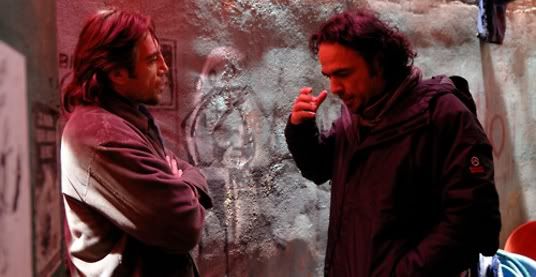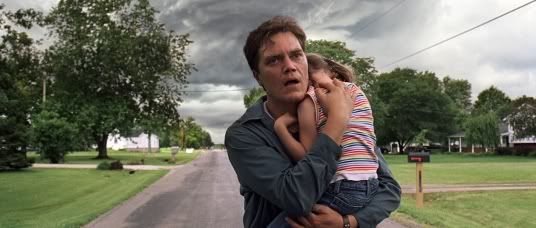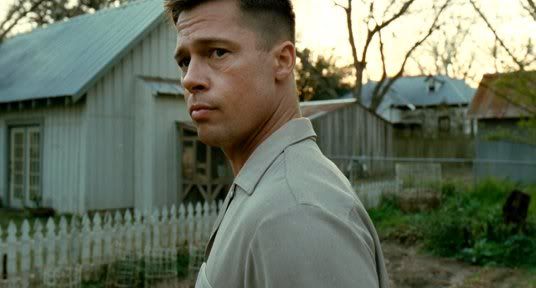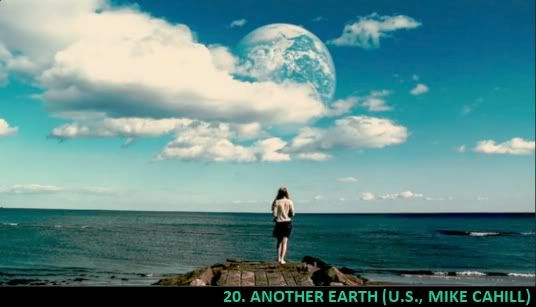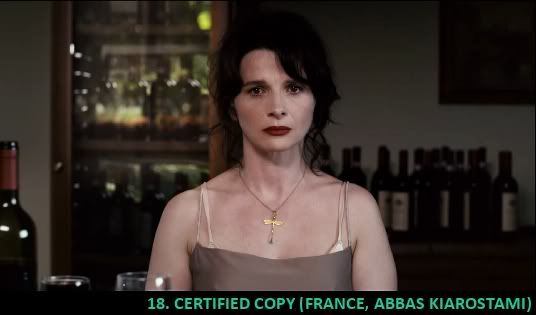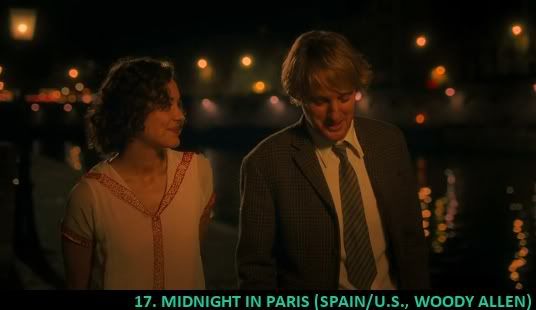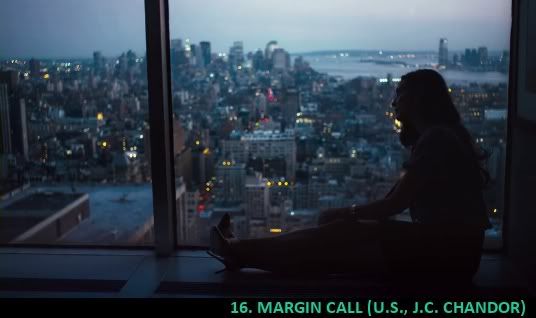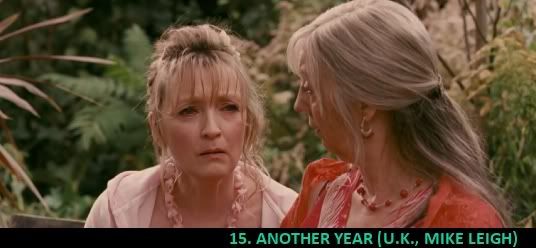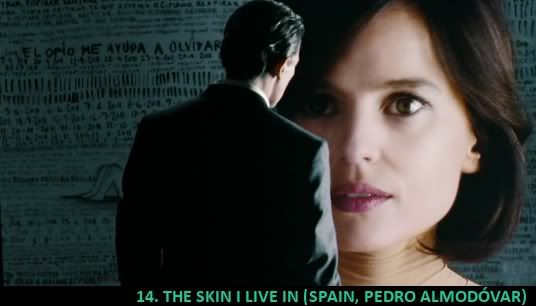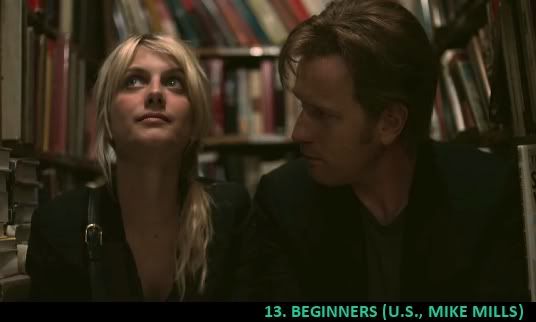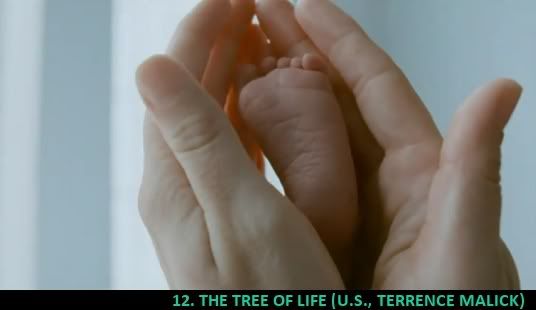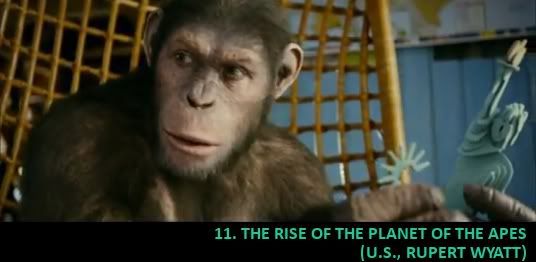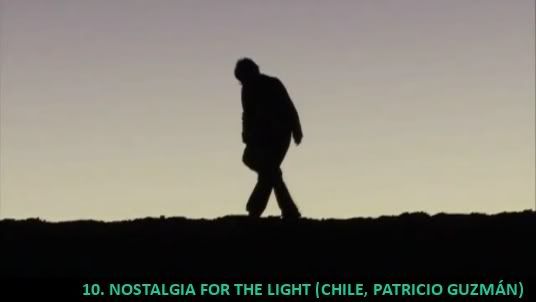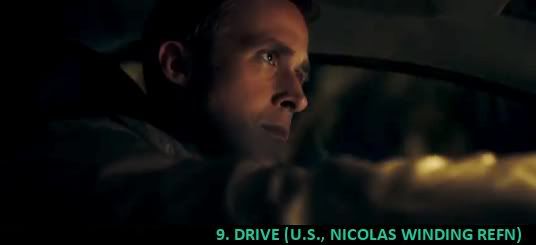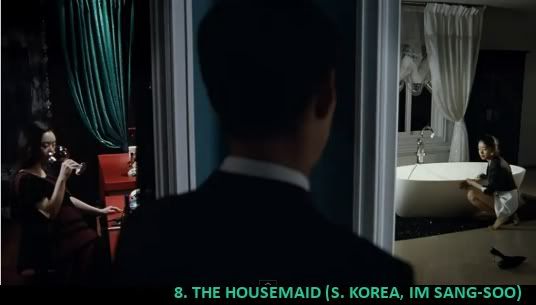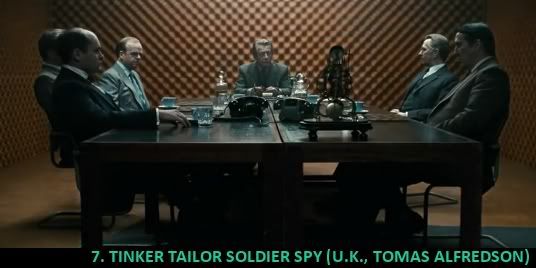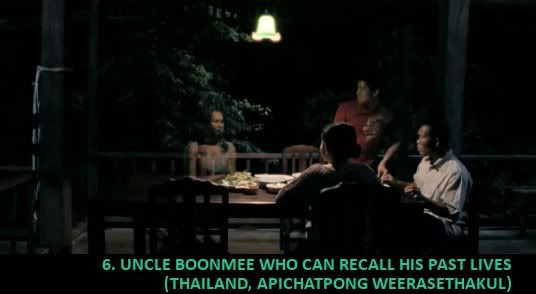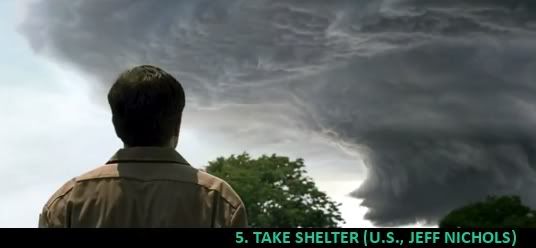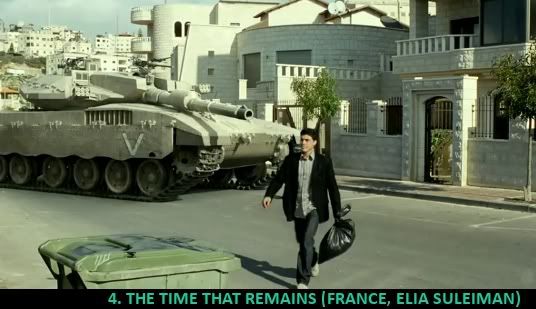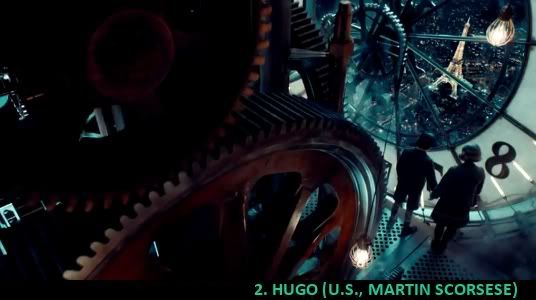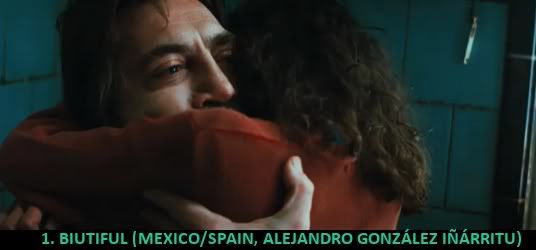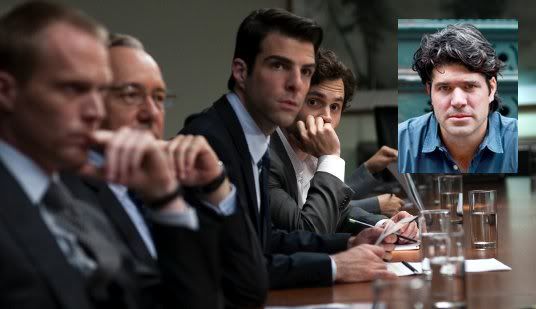
BEST ORIGINAL SCREENPLAY
"Margin Call" is a remarkably sober take on the collapsing house of cards that plunged the world into recession. J.C. CHANDOR explores the complex motivations and rationalizations that laid the groundwork for disaster, but he also creates fully-realized characters. The film's climactic scene, a monologue delivered by Jeremy Irons' CEO John Tuld, is emblematic of the mindset that brought us to this point.
SCOTT Z. BURNS spins a frighteningly real scenario in his pandemic disaster flick "Contagion" while never losing sight of the humans at its core. Originally a novelist, LEE CHANG-DONG’s light touch as a director is also apparent in his work as a screenwriter. A lot of the power in “Poetry” derives from what isn’t said. MIKE LEIGH’s script for “Another Year” ― more an outline to guide his actors’ improvisation ― is a masterwork of tone; not a false note in the entire film. The other Mike of 2011, MIKE MILLS, crafted a film that bravely breaks the fourth wall every chance it gets and relies more on his actors, not his words, to carry the "Beginners."
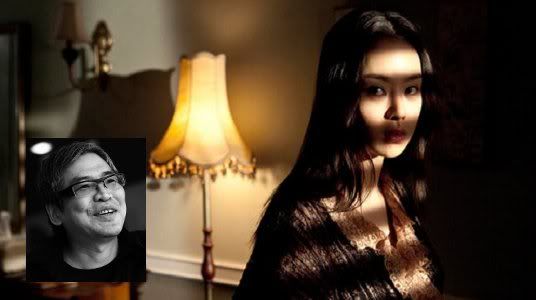
BEST ADAPTED SCREENPLAY
IM SANG-SOO skillfully culls (i.e. steals) the plot of the landmark 1960 film that launched a thousand imitators (most famously "Fatal Attraction"), but shapes it into something entirely different. Whereas the original South Korean film takes the side of the philandering husband, Im's version of "The Housemaid" observes its uppercrust soap opera from a cool distance. With biting dialogue and a surreal book-ending sequences, Im has created a satire that cuts to the bone.
At its heart "The Ides of March" is a crackerjack thriller, but GEORGE CLOONEY, GRANT HESLOV & "Farragut North" playwright BEAU WILLIMON also crafted slick, politically-savvy dialogue that manages to squeeze in a reference to Neville Chamberlain. You can almost tell which scenes STEVE ZAILLIAN and AARON SORKIN contributed to "Moneyball," their individual strengths -- honest sentimentality and polished dialogue -- constructing a film out of a thoroughly uncinematic book. PETER STRAUGHAN and his late wife BRIDGET O'CONNOR distill the best parts of the John Le Carre novel (and the BBC mini-series) "Tinker Tailor Soldier Spy" into an enthralling 120-minute film. Somehow, some way, JOHN LOGAN whittled down a 533-page novel into a film, "Hugo", with the heart and brains to appeal to kids and their parents.
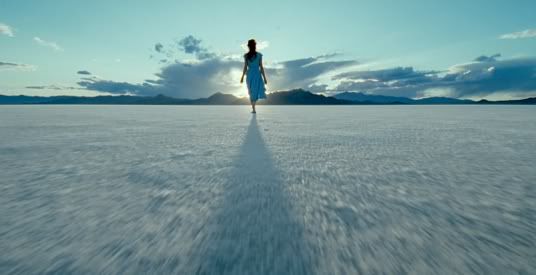
BEST CINEMATOGRAPHY
Having already proven his chops with the one-two punch of “The New World” and “Children of Men” a few years ago, there was no question EMMANUEL LUBEZKI would create another landmark for the artform with “The Tree of Life.” While the film is on shaky ground tonally, its visuals are something to behold. Working primarily with natural light sources, Lubezki captured indelible image after indelible image. He also has a skill for allowing traditionally-composed frames to blend seamlessly with post-production CG and macrophotography.
Like Lubezki, RODRIGO PRIETO proved his mettle working with available light for “Biutiful,” a film whose carefully composed images more than live up to its title. The cinematography of “Drive” ― full of reflective surfaces awash in the orange of high pressure sodium streetlights ― is integral to the film’s success; and NEWTON THOMAS SIGEL does not disappoint. The oft-ignored ALWIN KUCHLER (of 2002’s “Morvern Callar,” 2003’s “Code 46” and 2007’s “Sunshine”) turns in stunning compositions full of color and movement for “Hanna.” Old pro ROBERT RICHARDSON displays a deft hand capturing the cornucopia of period detail in his frames while never overwhelming the eye in “Hugo.”
BEST EDITING
First, a note about editing: Even professionals disagree about what constitutes “good” editing. What is clear is that a good editor can salvage the work of an inept director filming an unfocused script and a bad one can sink even the best material. Here, I do my best to judge editing based on the clarity and complexity of the film’s narrative and visual components. For instance, if you can’t tell where the protagonist is running to or from in an action sequence, that to me is bad editing.
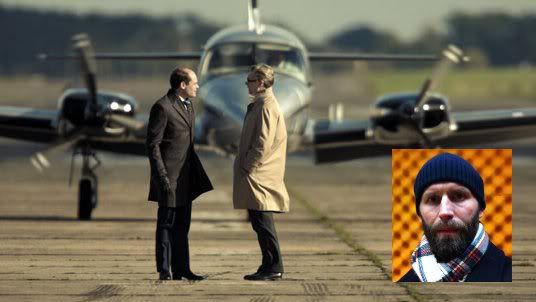
With so many characters with so many motivations competing for screen time in “Tinker Tailor Soldier Spy,” DINO JONSÄTER has to do a lot of heavy lifting, or cutting as it were. It’s a testament to his skill that the audience is never confused over which spy is which, something that’s integral to the success of a film like this. Even more impressive, the film never plods along despite its robust 127-minute running time.
"Biutiful" comes across as a carefully assembled jigsaw puzzle sometimes, with characters and plot threads weaving in and out of the narrative, but it works in large part because of STEPHEN MIRRIONE's sense of the Big Picture and all the necessary pixels along the way. JOSÉ SALCEDO apes Hitchcock’s cutters in Almodovar’s off-kilter “The Skin I Live In,” but he also shows he has a few of his own tricks up his sleeve. “Drive” is one of the “showier” examples of editing this year, but even so MAT NEWMAN knows how to build and diffuse suspense. PARKE GREGG shows a confidence in his shots that’s a rare trait among editors today. In “Take Shelter,” he isn’t afraid to hold a shot a few agonizing moments longer.

BEST ART DIRECTION
“Hugo” would not have worked without the aesthetically beautiful and setting-specific production design of DANTE FERRETTI and set decoration of FRANCESCA LO SCHIAVO, both Scorsese regulars. Their recreation of a 1931 Paris train station is full of period detail that immerses the viewer into the story. Bonus points for the intricate clocks and enchanting Georges Méliès film sets.
MARIA DJURKOVIC, TOM BROWN and JACQUELINE DURRAN capture the banalities and bureaucratic menace of “The Circus” in “Tinker Tailor Tailor Soldier Spy.” ANTXÓN GÓMEZ and CARLOS BODELÓN’s sets are an integral part of the mental duress the characters of “The Skin I Live In” feel. Never has bourgeois style felt more oppressive than in the slick, monochrome mansion LEE HA-JUN, HAN AH-REUM and YANG HYEON-MI create for “The Housemaid.” SHARIF WAKED and MAHA ASSAL create some stunning set pieces, including a see-through discothèque, for the surreal comedy of “The Time that Remains.”
BEST MUSIC OR SONG SCORE
Admittedly, combining CLIFF MARTINEZ's original cues with the recycled tunes wrangled by music supervisors ERIC CRAIG and BRIAN McNELIS is a bit of a cheat. Regardless, "Drive" featured hands-down the best score, original or adapted, of any film released in 2011. Every piece contributes to director Nicolas Winding Refn’s vision of modern Los Angeles.
DAVID WINGO's "Take Shelter" score is simple and incessant. His electronic wind chimes and swelling strings lay the groundwork for a man's unraveling. Like the best Bernard Hermann scores, ALBERTO IGLESIAS' compositions for "The Skin I Live In" are classically unhinged. FALL ON YOUR SWORD's hypnotic keyboards create an ethereal undercurrent for the Earth-bound drama of "Another Earth." It's easy to lose HOWARD SHORE's understated score beneath the stunning visuals of "Hugo," but he too adds to the film's distinct sense of time and place.
BEST FEATURED SONG
Discovering YOU AND ME, recorded by the Columbus, Ohio-based Penny & the Quarters in the early 1970s, was a coup for Ryan Gosling and director Derek Cianfrance. Taken out of context, it's a sugary pop confection. But it lends a shopworn sweetness to “Blue Valentine,” a tale of doomed romance.
Covering Led Zeppelin's IMMIGRANT SONG with Karen O was a stroke of brilliance, one of the only one to be found in Trent Reznor and Atticus Ross' all-too-familiar score for "The Girl with the Dragon Tattoo." Quietly released in 2010, College's anthemic electro-pop bauble A REAL HERO made a lasting impression in this year's "Drive." Tacked onto the end credits of "Win Win," The National's THINK YOU CAN WAIT is a solid piece of songwriting even if it doesn't jibe with the film around it. The Chemical Brother's HANNA'S THEME is the ear candy to Alwin Kuchler's eye candy.
BEST SOUND DESIGN
Even more stunning than the dense visuals were the city soundscapes created for Scorsese's HUGO. The train station sounds like a train station; the sound mixers adding a fourth dimension to the experience. THE GIRL WITH THE DRAGON TATTOO boasted an impressive array of sounds, integrating the beeps, bloops and taps of its plugged-in hacker into Reznor and Ross' ambient score. DRIVE made full use of its L.A. stunt driver milieu, using sound to propel the plot. TAKE SHELTER blends ambient and foley sounds with David Wingo's score to create an claustrophobic emptiness. A lot of the work in SUPER 8 is boilerplate, but the train sequence was a genuinely thrilling piece of sound editing.
BEST VISUAL EFFECTS
The visual effects in THE TREE OF LIFE allowed Terrence Malick to show his audience something they hadn't seen before: the creation of the universe. HUGO featured some of the best 3-D work I've seen, creating an immersive environment that didn't leave me with an aching head. RISE OF THE PLANET OF THE APES marked a sizeable, if not gorilla-sized, step forward for motion capture. While I wasn't crazy about the film, the effects, including an emaciated Chris Evans (if only Christian Bale was available…), in CAPTAIN AMERICA: THE FIRST AVENGER were undeniably impressive. REAL STEEL created boxing robots more tactile than anything Michael Bay has conjured.


